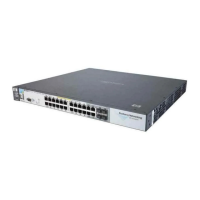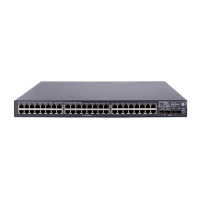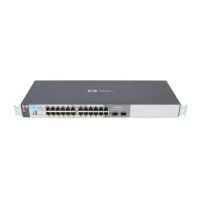Appendix G: VRRP
Virtual Router Redundancy Protocol (VRRP) is designed to eliminate the single point of failure inherent in the
static default routed environment. In a VRRP environment, two or more “virtual” routers cooperate to provide
a high-availability capability on a LAN. VRRP specifies an election protocol that dynamically assigns routing
responsibility to one of the virtual routers on a LAN.
A virtual router consists of a set of router interfaces on the same network that share a virtual router identifier
(VRID) and a virtual IP address. One router in the group becomes the VRRP Master and the other routers are
designated as VRRP Backups. The VRRP Master controls the IP addresses associated with a virtual router.
The VRRP Master router periodically sends advertisements to a reserved multicast group address. The VRRP
Backup routers listen for advertisements, and one of the Backups will assume the Master role, if necessary. A
VRRP router can support many virtual router instances, each with a unique VRID/IP address combination. The
election process provides dynamic failover to one of the remaining VRRP Backups should the Master become
unavailable.
The virtual IP address shared by a group of VRRP routers on a given network segment functions as the next-
hop IP address used by neighboring hosts. The VRRP Master router simply forwards packets that have been
received from hosts using the VRRP Master as the next-hop gateway. The existence of a VRRP Master and one
or more VRRP Backups is transparent to the neighboring hosts.
The advantage gained from using VRRP is a default path with higher availability, but without requiring
configuration of dynamic routing or router discovery protocols on every end host.
VRRP on HP ProCurve switches is interoperable with other routers that support RFC 3768.
VRRP operational aspects include:
•Preemptdelaytimertoallowotherprotocolstocompletetheirconvergences
•PreemptivemodecanbedisabledtopreventVRRProuterflapping
•DefaultAdvertisementintervalof1second
•DefaultDetectiontimeof3.6seconds
Figure A7.
67

